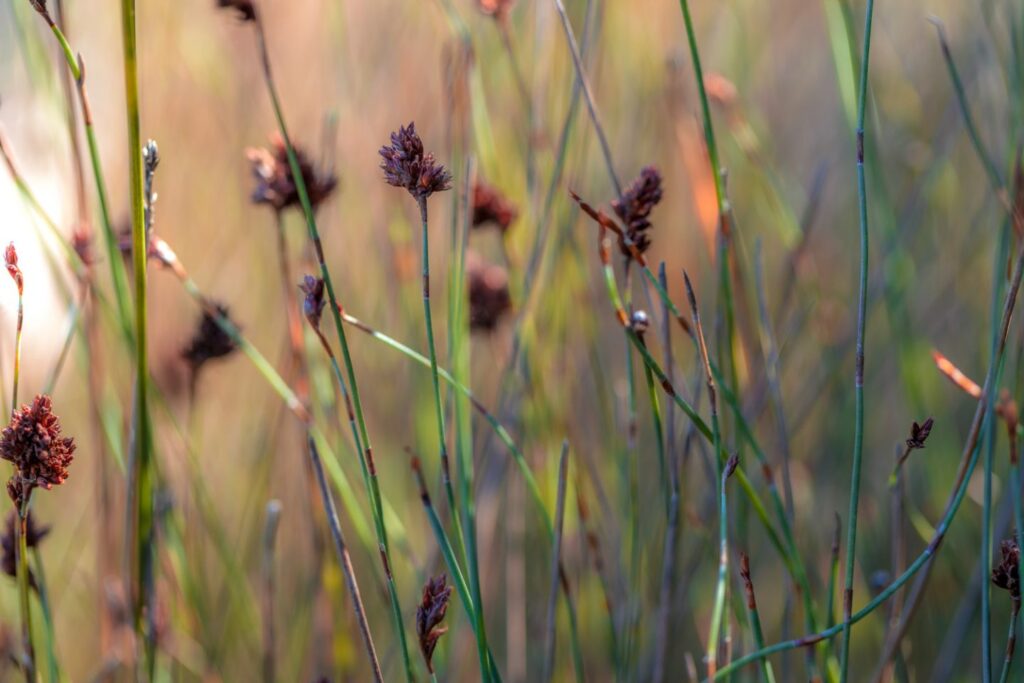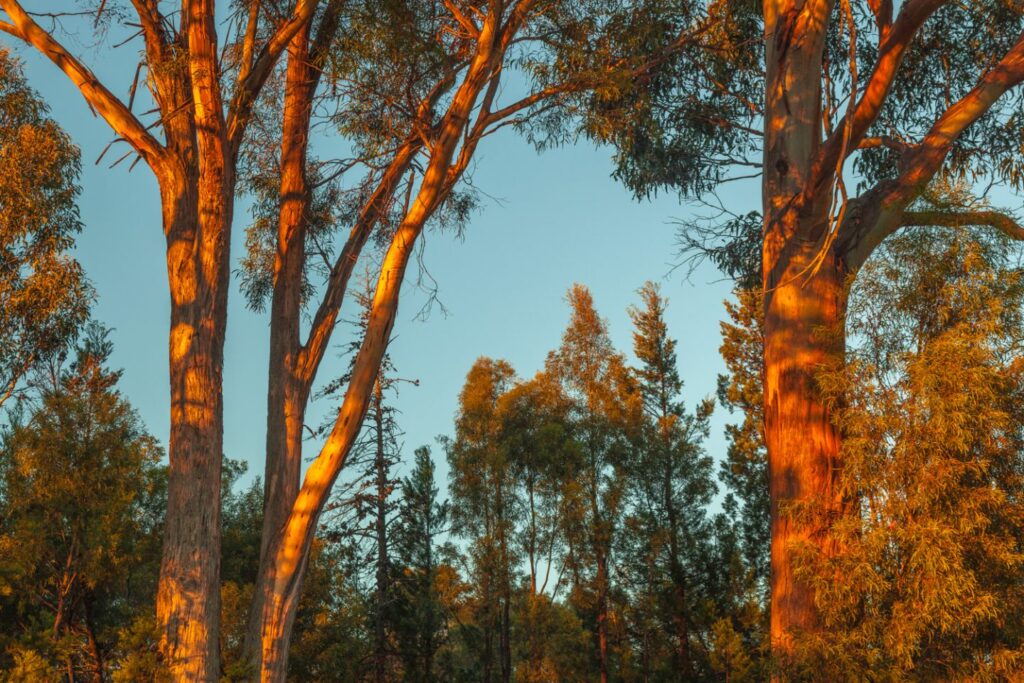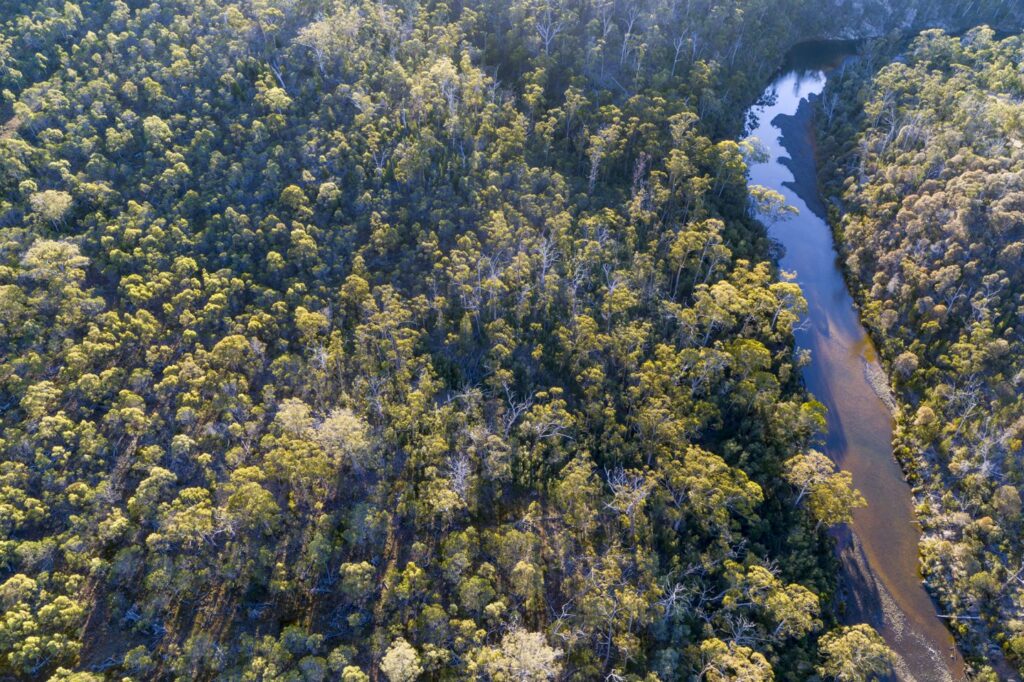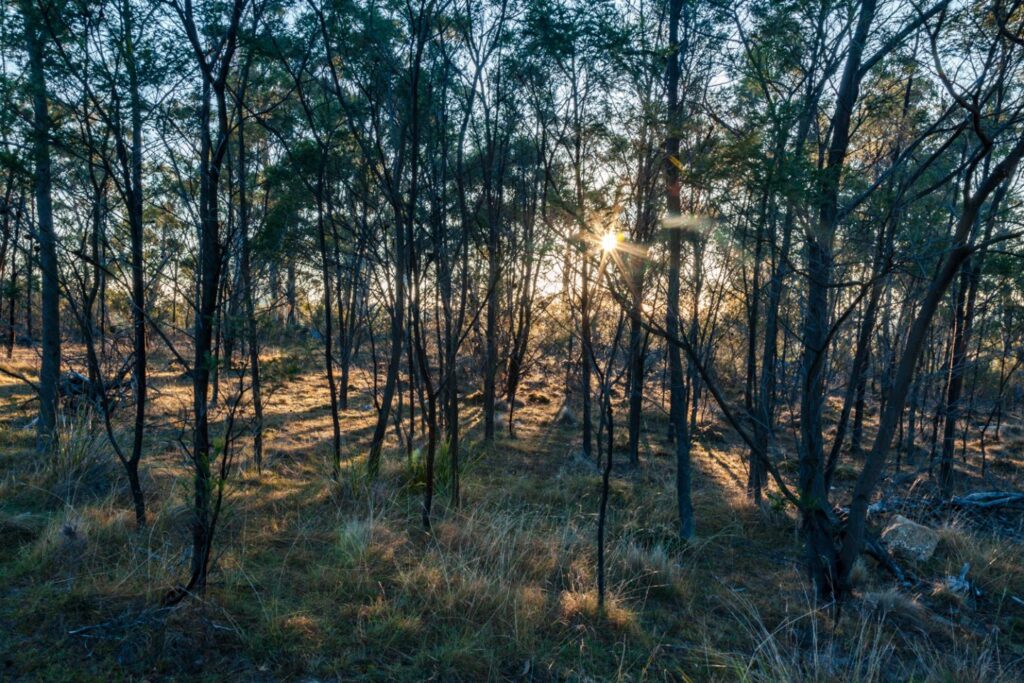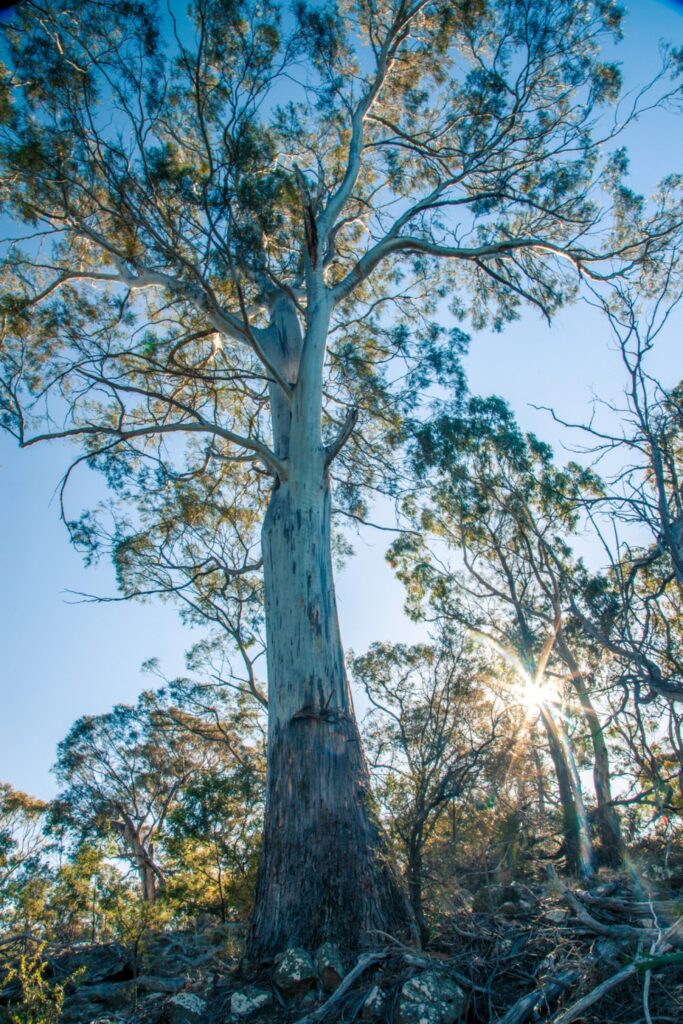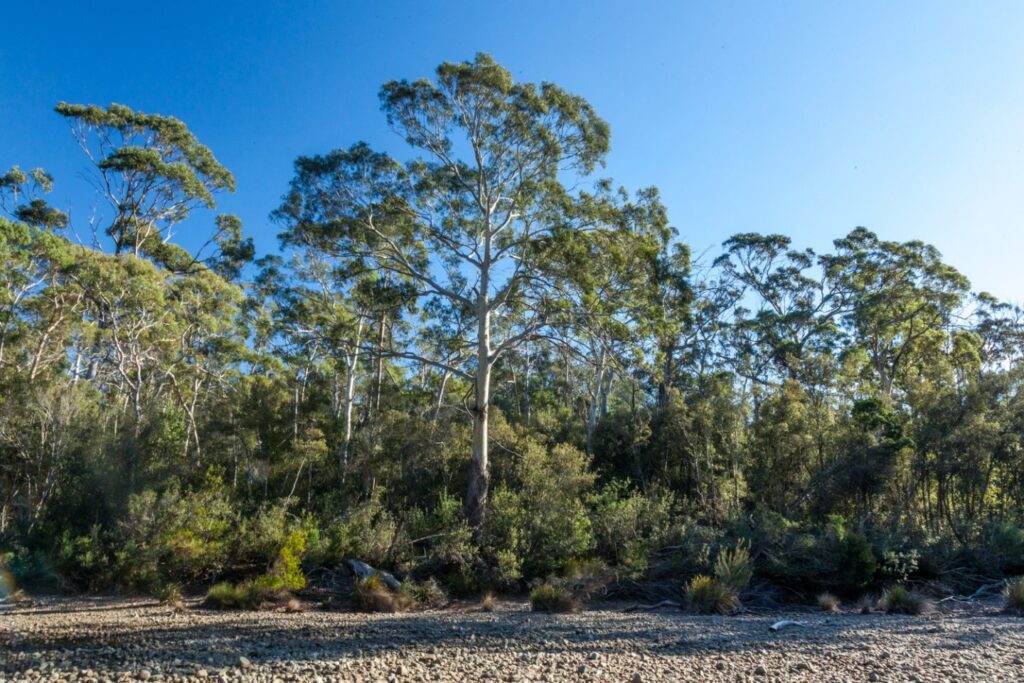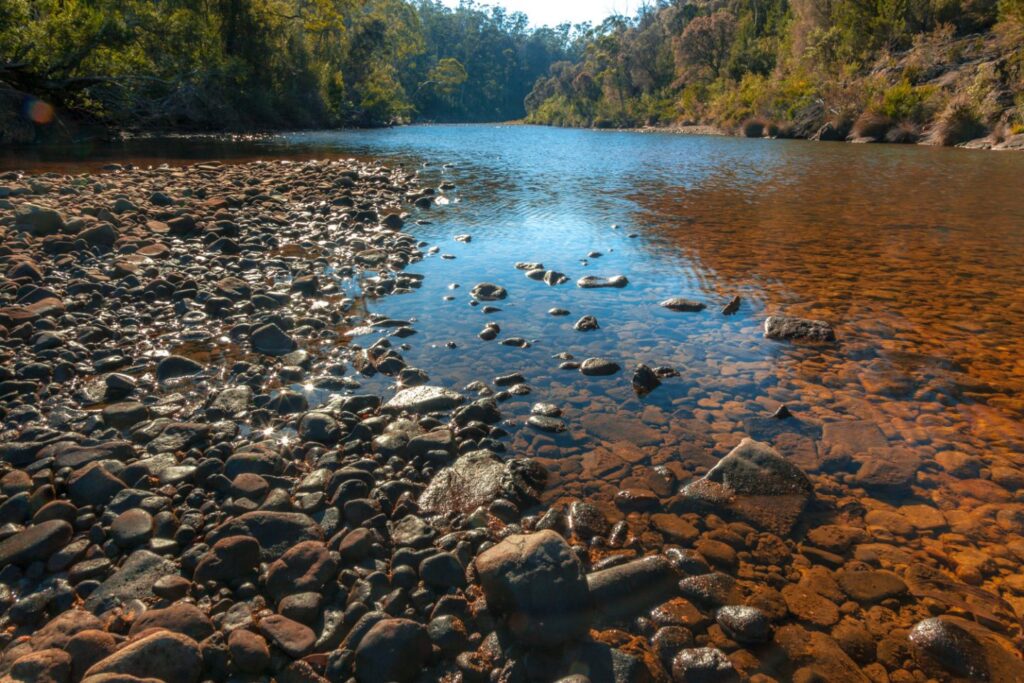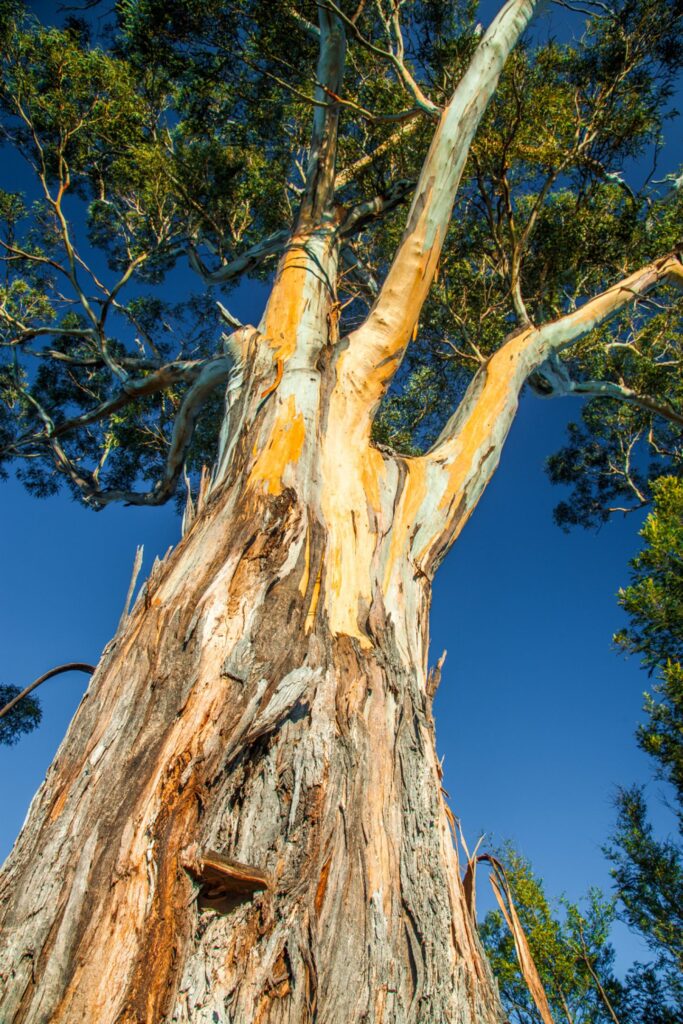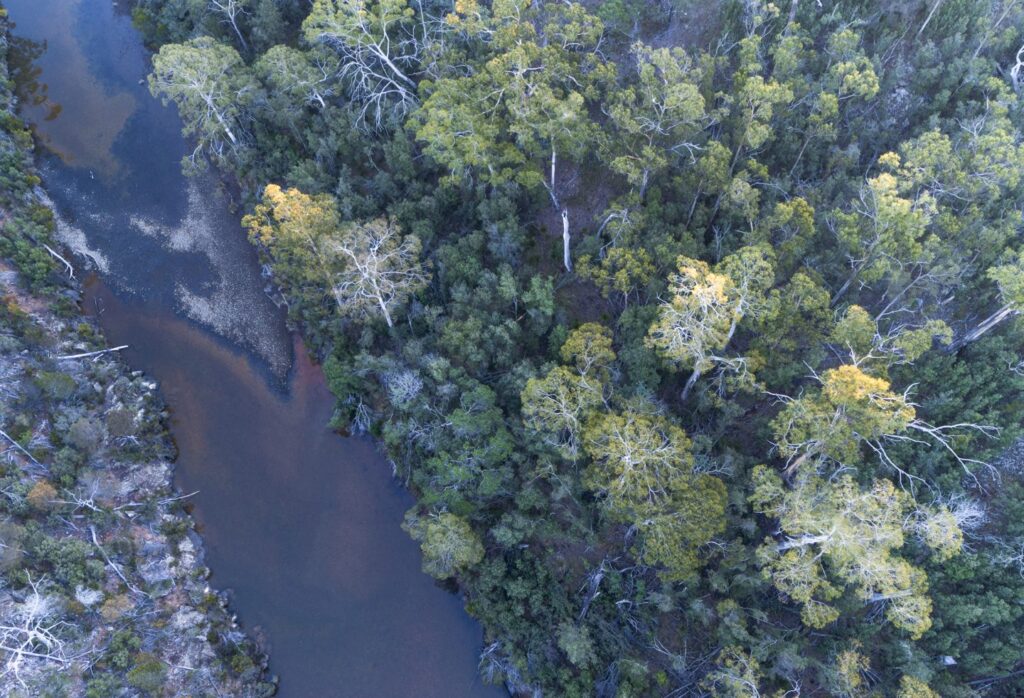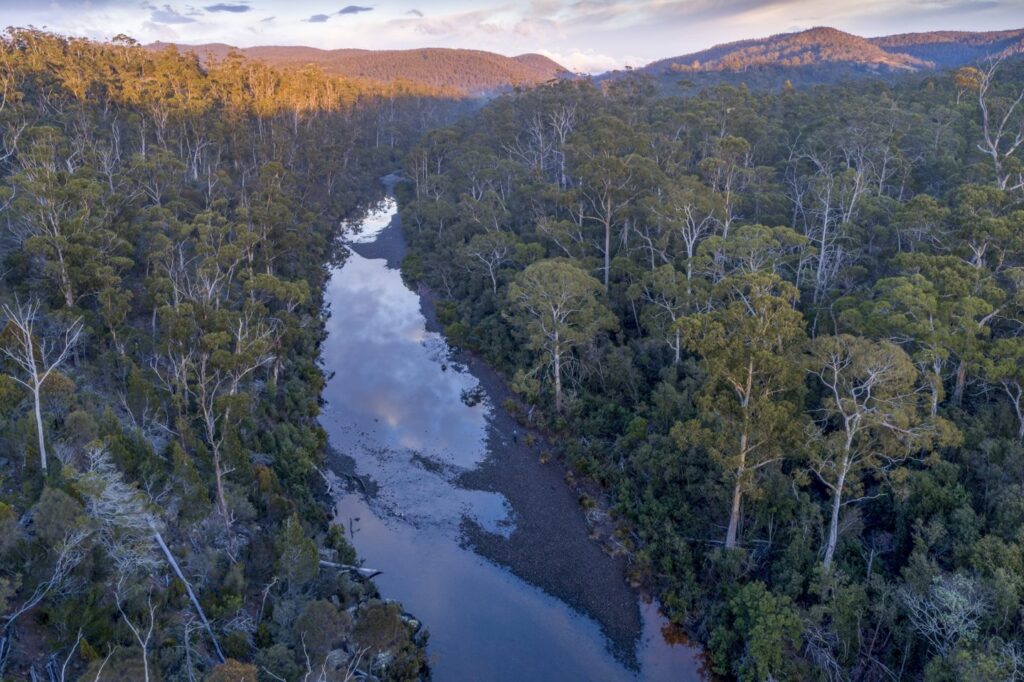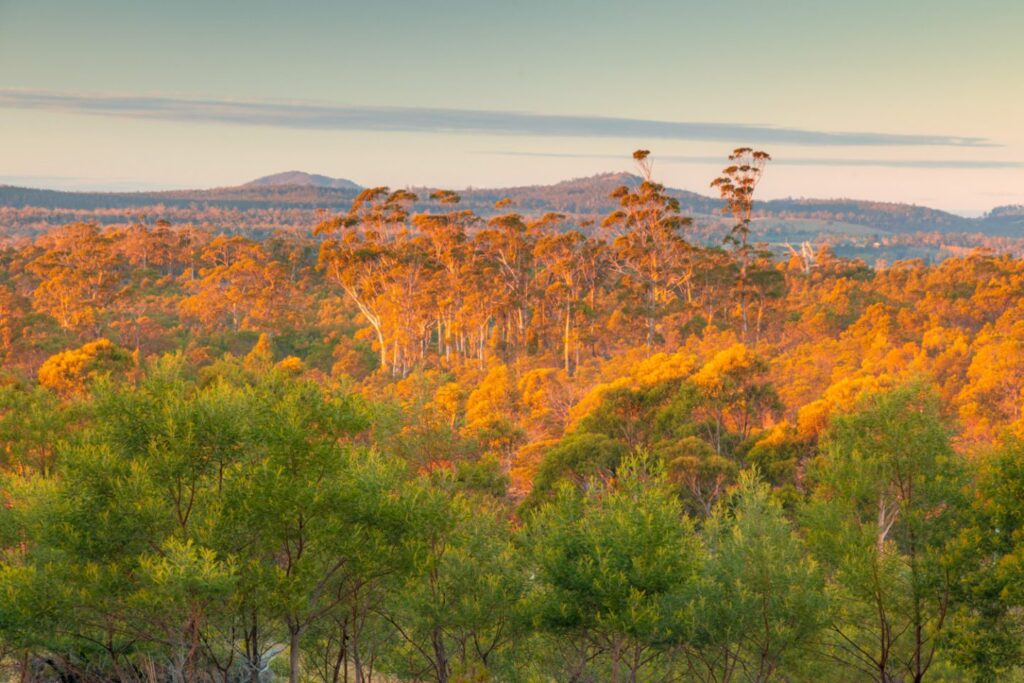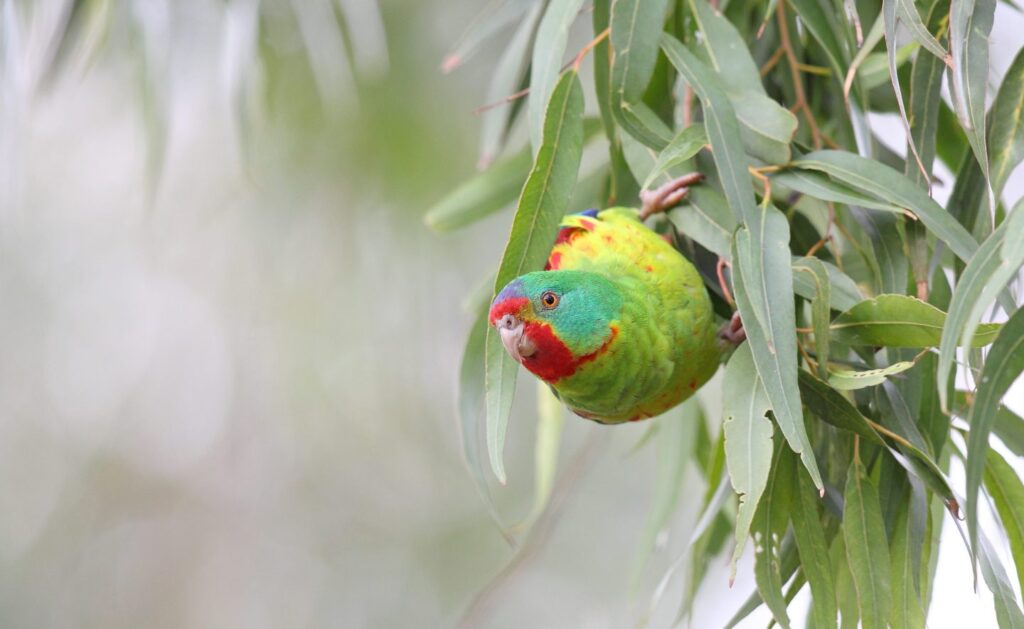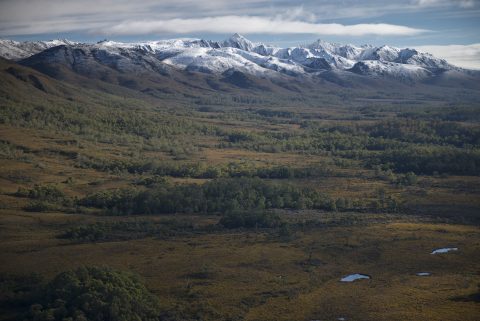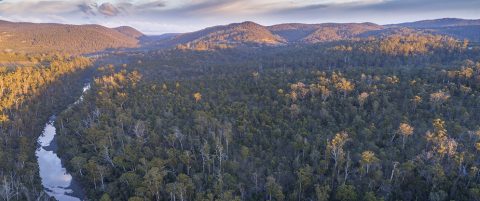NATURAL VALUES AND CONTEXT
Towering old-growth blue gum (Eucalyptus globulus) forest is one of three threatened forest communities providing essential habitat for a diversity of threatened species at Little Swanport Reserve, making it a vital addition to Tasmania’s protected area network. These forests are so rarely seen on Tasmania’s east coast and are essential for providing the critically endangered swift parrot (Lathamus discolor) with food, shelter and breeding hollows, and the best possible chance of survival.
The swift parrot relies on large patches of old-growth forest containing a combination of breeding, nesting and foraging habitat, and Little Swanport Reserve has all three.
“The swift parrot could very quickly become extinct before our eyes. Protecting habitat in its core range is the most important thing we can do now to secure its future. Little Swanport provides healthy mature trees with exceptional nesting hollows to make that possible.” — Dr Sally Bryant
With one and a half kilometres of direct frontage to the Little Swanport River, the 150-hectare reserve also provides a safe place for species to move between aquatic and terrestrial habitats and is important habitat for a diversity of threatened species, including the Tasmanian devil (Sarcophilus harrisii), Tasmanian bettong (Bettongia gaimardi), eastern quoll (Dasyurus viverrinus), eastern barred bandicoot (Perameles gunnii) and the elusive spotted quail thrush (Cinclosoma punctatum).
MANAGING LITTLE SWANPORT RESERVE
- Manage access and support visitor facilities to reduce risks especially inappropriate fire
- Improve security for hollow dependent species especially swift parrot through predator control and nest box deployment
- Reduce weeds and invasive fauna to improve habitat quality and security of threatened and critical weight range species
- Ensure degraded areas and vegetation communities regenerate into appropriate ecological successional stages
- Contribute to community networks to address mutual issues in the landscape especially weeds and fire management
Banner image: Andy Townsend
